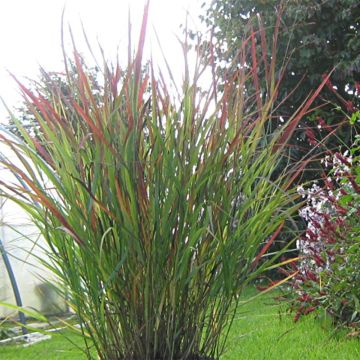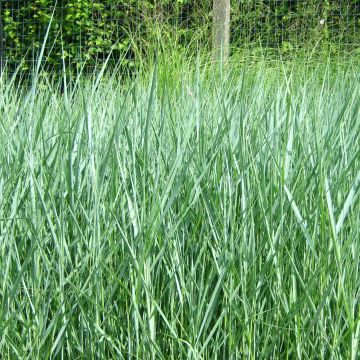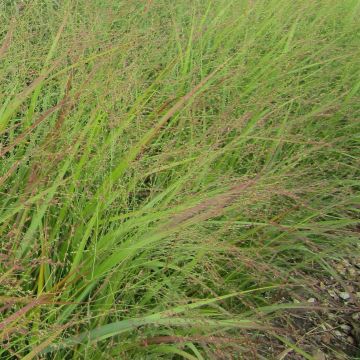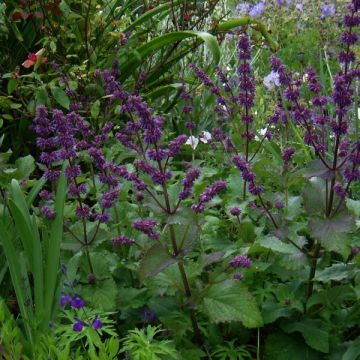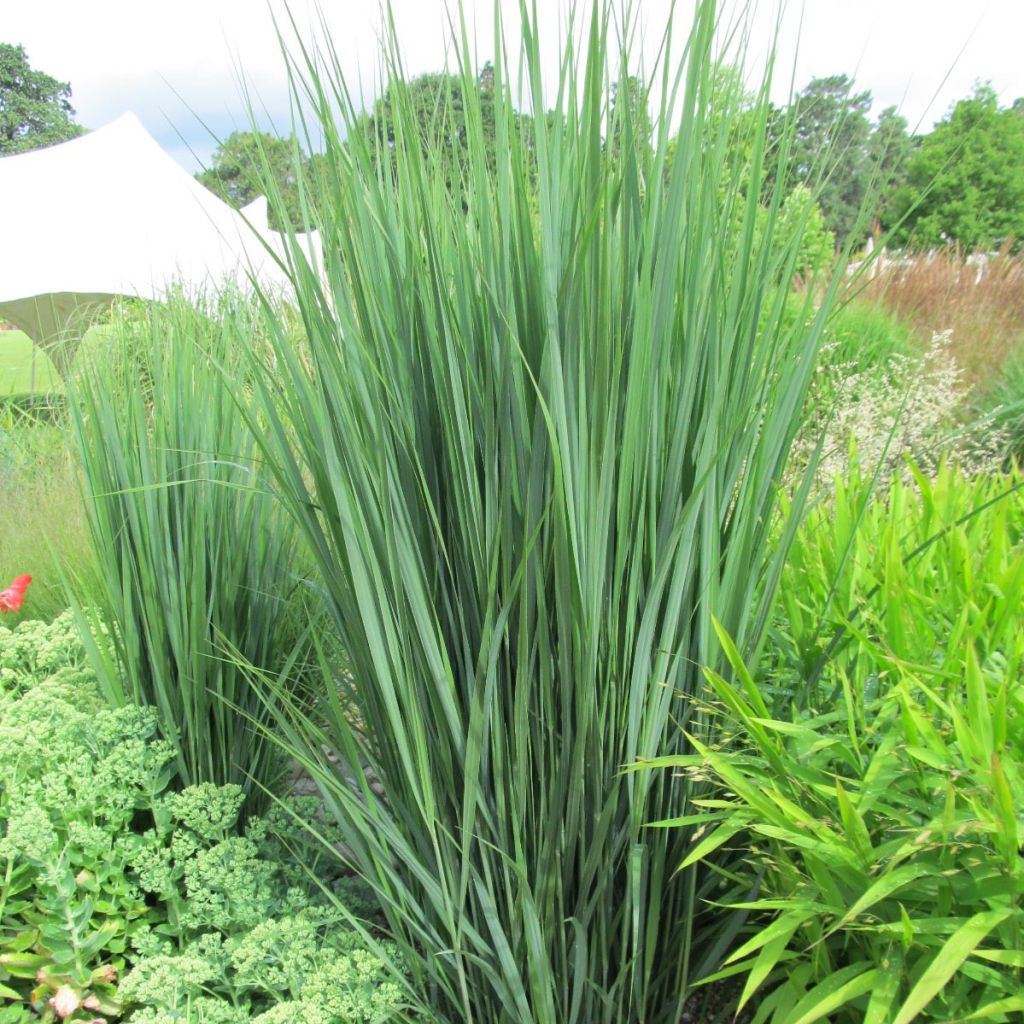

Panicum virgatum Northwind - Switchgrass
Panicum virgatum Northwind - Switchgrass
Panicum virgatum Northwind
Switchgrass
This item cannot be shipped to the selected country
Delivery charge from €5.90
Delivery charge from €5.90
More information
Schedule delivery date,
and select date in basket
This plant carries a 12 months recovery warranty
More information
We guarantee the quality of our plants for a full growing cycle, and will replace at our expense any plant that fails to recover under normal climatic and planting conditions.
From €5.90 for pickup delivery and €6.90 for home delivery
Express home delivery from €8.90.
From €5.90 for pickup delivery and €6.90 for home delivery
Express home delivery from €8.90.
Does this plant fit my garden?
Set up your Plantfit profile →
Description
Panicum virgatum 'Northwind', also known as switch grass, stands out from other varieties with its upright habit and broader leaves, which are a very blue-green colour. This tall perennial grass resembles a cloud when it blooms in summer, with large, airy panicles in pink. The entire plant takes on a lovely blonde hue in autumn and maintains a magnificent habit in winter. It impresses with its extreme adaptability to all kinds of soils, as long as they are not too poor. Once established, it can tolerate summer drought but requires full sun to thrive. This non-invasive plant is a reliable choice for the garden, both powerful and light as air.
Panicum virgatum belongs to the Poaceae family, which once ruled the fertile plains of the American Midwest, serving as a fodder for the immense herds of wild bison. The variety 'Northwind', discovered in 1992 in an Illinois nursery, is a variant of this non-spreading rhizomatous plant with a distinctly upright habit and broader foliage. This semi-evergreen grass develops rapidly into beautiful clumps of long, ribbon-like, green-blue leaves, measuring 1.5m (5ft) in length, with only the tips arching. They are marked by a stiffer central vein that allows the foliage to maintain its upright posture and prevents it from drooping in the rain. Its mature dimensions range from 1.5 to 2m (5 to 7ft) in height and almost as much in width, depending on growing conditions. Flowering occurs from August to October. Clumps of foliage emerge from long, stiff stems covered with large, airy panicles measuring 40cm (16in) in length, made up of countless small flowers tinted dark pink, forming a cloud. In autumn, the foliage and flowers take on golden hues, lasting until winter. This variety remains ornamental throughout winter.
European millet is mainly composed of annual species. Perennial species like Panicum virgatum come from America. Adapted to extreme conditions, panicum can withstand anything: drought, cold, and waterlogged soils. It is versatile and adapts to many situations in the garden. Non-suckering, this tall grass is highly appreciated at the back of slightly wild beds, planted as a screen. It can be planted with tall wild asters, such as Aster laevis or Aster turbinellus, or even Helianthus salicifolius and Verbena hastata. It can also form large groups near bodies of water. This plant is particularly well suited to coastal areas as it tolerates salt spray. It is a wonderful structural plant, perfect in a large container on a patio to create a minimalist scene in a contemporary style.
Its deep root system (up to 2m (7ft) deep) helps break up soils, protecting them in winter and enriching them with organic matter. This characteristic is used on a large scale as it allows other plants or crops to grow on poor soils where it would not have been possible before. Switch grasses remain decorative even in winter, where they provide shelter for birds that also feed on their seeds.
Report an error about the product description
Panicum virgatum Northwind - Switchgrass in pictures






Flowering
Foliage
Plant habit
Botanical data
Panicum
virgatum
Northwind
Poaceae
Switchgrass
Cultivar or hybrid
Other Panicum
Planting and care
This grass plant is resistant to cold and able to grow in many conditions, although it prefers deep and rich soils, even clayey or limestone ones. However, a sunny exposure is required.
Plant Panicum virgatum in fertile, deep, dry to moist soil, even if humid in summer. Plant in the sun. The plant appreciates an application of good fertiliser 2 to 3 times a year, before the start of growth and during the summer. Cut back the clumps in April, at the start of new growth.
In dry and less fertile soil, Panicum virgatum 'Northwind' will show slower growth, especially in the first few years, and slightly less spectacular development. The plant's drought resistance is proven once it has been able to deeply root itself in the soil. It is therefore important to water it regularly during dry periods, for 2 or 3 years.
Planting period
Intended location
Care
-
, onOrder confirmed
Reply from on Promesse de fleurs
Summer flowering perennials
Haven't found what you were looking for?
Hardiness is the lowest winter temperature a plant can endure without suffering serious damage or even dying. However, hardiness is affected by location (a sheltered area, such as a patio), protection (winter cover) and soil type (hardiness is improved by well-drained soil).

Photo Sharing Terms & Conditions
In order to encourage gardeners to interact and share their experiences, Promesse de fleurs offers various media enabling content to be uploaded onto its Site - in particular via the ‘Photo sharing’ module.
The User agrees to refrain from:
- Posting any content that is illegal, prejudicial, insulting, racist, inciteful to hatred, revisionist, contrary to public decency, that infringes on privacy or on the privacy rights of third parties, in particular the publicity rights of persons and goods, intellectual property rights, or the right to privacy.
- Submitting content on behalf of a third party;
- Impersonate the identity of a third party and/or publish any personal information about a third party;
In general, the User undertakes to refrain from any unethical behaviour.
All Content (in particular text, comments, files, images, photos, videos, creative works, etc.), which may be subject to property or intellectual property rights, image or other private rights, shall remain the property of the User, subject to the limited rights granted by the terms of the licence granted by Promesse de fleurs as stated below. Users are at liberty to publish or not to publish such Content on the Site, notably via the ‘Photo Sharing’ facility, and accept that this Content shall be made public and freely accessible, notably on the Internet.
Users further acknowledge, undertake to have ,and guarantee that they hold all necessary rights and permissions to publish such material on the Site, in particular with regard to the legislation in force pertaining to any privacy, property, intellectual property, image, or contractual rights, or rights of any other nature. By publishing such Content on the Site, Users acknowledge accepting full liability as publishers of the Content within the meaning of the law, and grant Promesse de fleurs, free of charge, an inclusive, worldwide licence for the said Content for the entire duration of its publication, including all reproduction, representation, up/downloading, displaying, performing, transmission, and storage rights.
Users also grant permission for their name to be linked to the Content and accept that this link may not always be made available.
By engaging in posting material, Users consent to their Content becoming automatically accessible on the Internet, in particular on other sites and/or blogs and/or web pages of the Promesse de fleurs site, including in particular social pages and the Promesse de fleurs catalogue.
Users may secure the removal of entrusted content free of charge by issuing a simple request via our contact form.
The flowering period indicated on our website applies to countries and regions located in USDA zone 8 (France, the United Kingdom, Ireland, the Netherlands, etc.)
It will vary according to where you live:
- In zones 9 to 10 (Italy, Spain, Greece, etc.), flowering will occur about 2 to 4 weeks earlier.
- In zones 6 to 7 (Germany, Poland, Slovenia, and lower mountainous regions), flowering will be delayed by 2 to 3 weeks.
- In zone 5 (Central Europe, Scandinavia), blooming will be delayed by 3 to 5 weeks.
In temperate climates, pruning of spring-flowering shrubs (forsythia, spireas, etc.) should be done just after flowering.
Pruning of summer-flowering shrubs (Indian Lilac, Perovskia, etc.) can be done in winter or spring.
In cold regions as well as with frost-sensitive plants, avoid pruning too early when severe frosts may still occur.
The planting period indicated on our website applies to countries and regions located in USDA zone 8 (France, United Kingdom, Ireland, Netherlands).
It will vary according to where you live:
- In Mediterranean zones (Marseille, Madrid, Milan, etc.), autumn and winter are the best planting periods.
- In continental zones (Strasbourg, Munich, Vienna, etc.), delay planting by 2 to 3 weeks in spring and bring it forward by 2 to 4 weeks in autumn.
- In mountainous regions (the Alps, Pyrenees, Carpathians, etc.), it is best to plant in late spring (May-June) or late summer (August-September).
The harvesting period indicated on our website applies to countries and regions in USDA zone 8 (France, England, Ireland, the Netherlands).
In colder areas (Scandinavia, Poland, Austria...) fruit and vegetable harvests are likely to be delayed by 3-4 weeks.
In warmer areas (Italy, Spain, Greece, etc.), harvesting will probably take place earlier, depending on weather conditions.
The sowing periods indicated on our website apply to countries and regions within USDA Zone 8 (France, UK, Ireland, Netherlands).
In colder areas (Scandinavia, Poland, Austria...), delay any outdoor sowing by 3-4 weeks, or sow under glass.
In warmer climes (Italy, Spain, Greece, etc.), bring outdoor sowing forward by a few weeks.


































